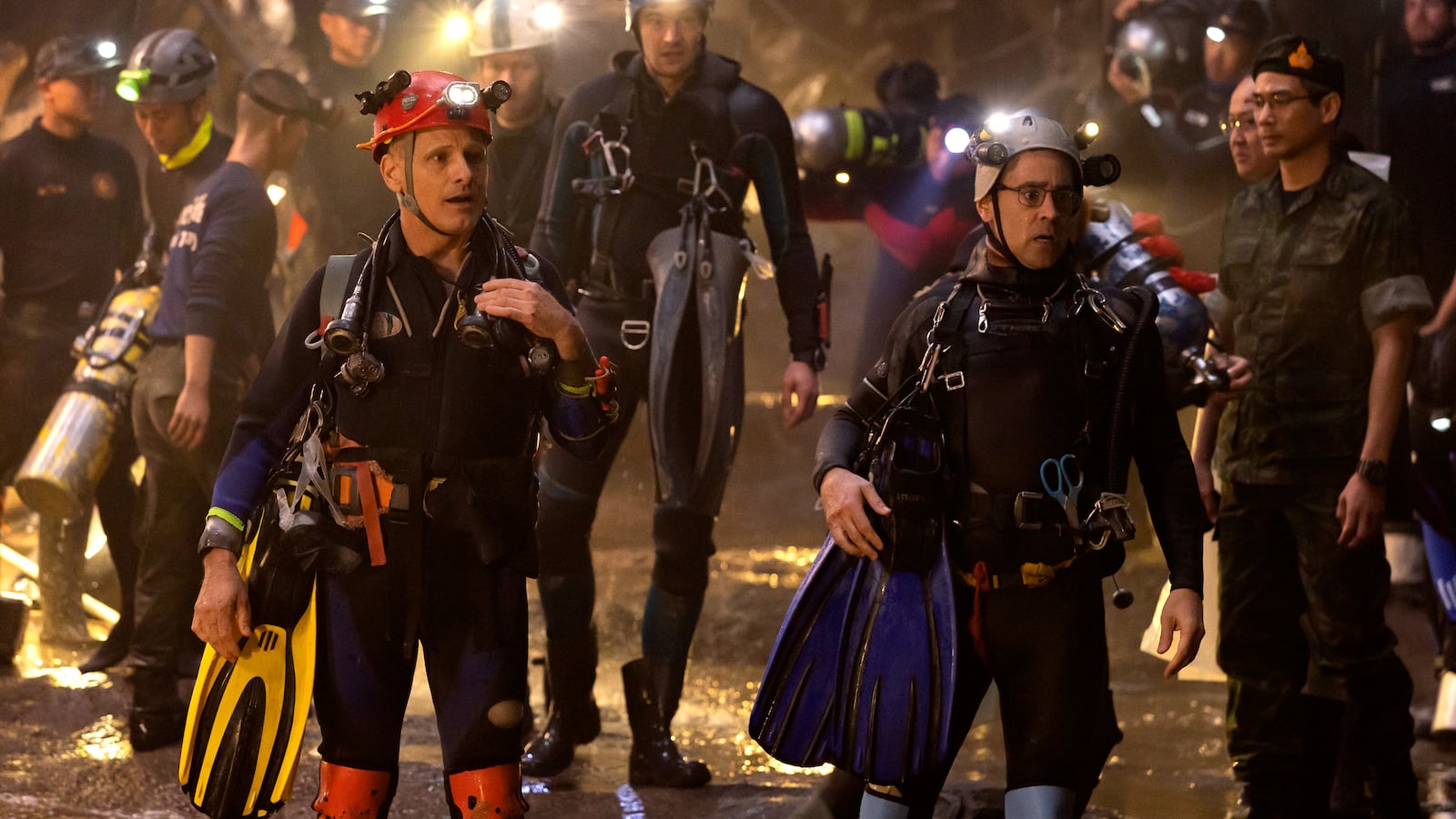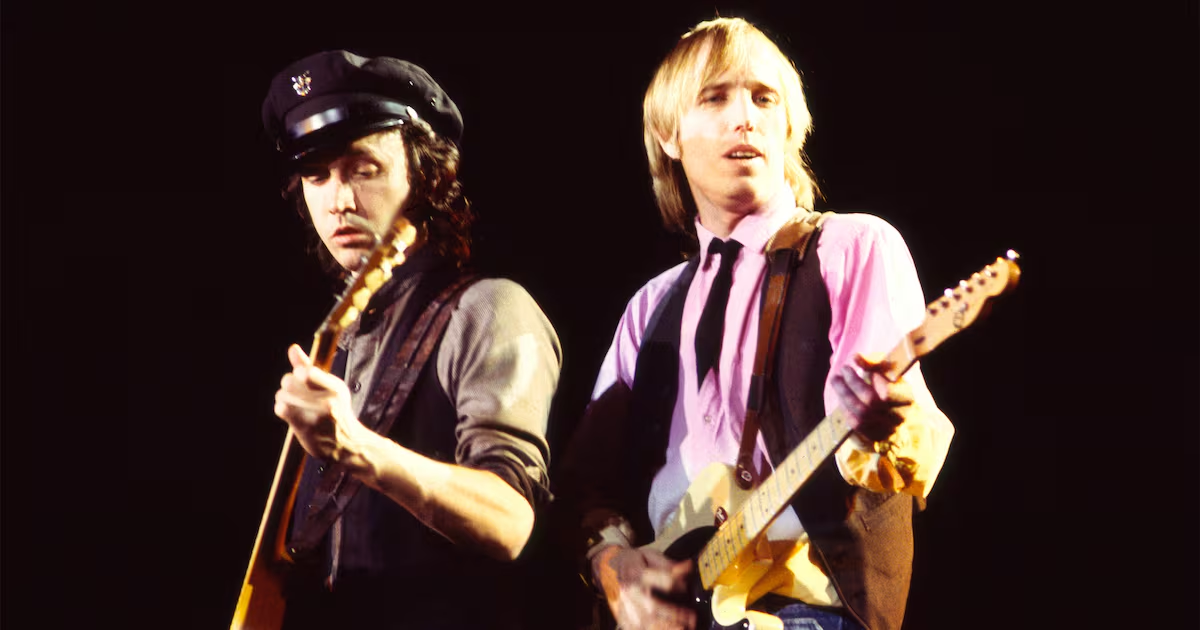There’s a natural inclination to call the 2018 Tham Luang cave rescue a miracle when, in fact, it was a byproduct of immense ingenuity, teamwork, and professionalism. Thus, it’s a story fit for Ron Howard, whose behind-the-camera career has been marked less by flashy showmanship than by reliable and industrious competence on challenging large-scale projects. Thirteen Lives is an ideal marriage of material and artist, a based-on-true-events drama that revisits a nerve-wracking tale with equal parts suspense, poignancy, and amazement. It’s a film whose particulars needs no embellishment, and whose modesty and economy are key to its affecting impact.
Premiering in theaters July 29 (and debuting on Prime Video Aug. 5), Thirteen Lives runs a not-inconsiderable 147 minutes and yet is defined by its narrative leanness, at least with regard to its lack of elaborate detours and time-consuming subplots. In its first few minutes, it details the decision by a northern Thailand junior soccer team to follow up a practice by visiting Tham Luang Nang Non cave. William Nicholson’s ace script delineates the personalities of more than one of those adolescent boys in mere moments, all while swiftly depicting their descent into the dark, dank lair shortly before a deluge begins filling it with water. An uncharacteristically early taste of the forthcoming monsoon season, this downpour spells what appears to be doom for the 12 kids (ages 11 to 16) and their coach, who find themselves four kilometers into the subterranean cavity, trapped by impenetrable tides.
Once its basic setup is established, Thirteen Lives turns its attention to the panicked families of the boys—who were expecting to see them at one player’s birthday party that evening—and then overseas to two Englishmen: Richard Stanton (Viggo Mortensen) and John Volanthen (Colin Farrell), the former a retired firefighter and the latter an IT consultant with a young son. More importantly, they’re peerless cave divers. Volanthen is introduced making his initial call to Stanton, informing him that they’ve been placed on a list of possible experts by Thai authorities, and during this exchange, Stanton’s reticence and gruffness and Volanthen’s craftiness and empathy shine through. By the time they show up at Tham Luang cave in order to provide assistance—as well as have a brief, playful squabble about Volanthen’s custard crème cookies—the film has, in a few acute brushstrokes, delineated both men’s character and rapport.
Such storytelling proficiency is par for the course with Thirteen Lives, whose screenplay has not an ounce of unnecessary fat on it, and whose direction tells by showing. No sooner have Stanton and Volanthen arrived at the disaster site than they’re taking a plunge into Tham Luang cave’s depths, this despite the displeasure of the country’s Navy SEALs, whose commander bristles at the idea that interlopers are better equipped for this scenario than his men (and might even take over command of the operation). Howard dives in with his two protagonists, his camera sticking up against them as they navigate a sea of green murk and twisting, narrow passageways; his digitally overlaid maps of the cave, meanwhile, provide necessary counterbalancing lucidity. Shots from Stanton and Volanthen’s point of view, their path illuminated only by meager helmet flashlights and their tanks clanking against the surrounding rocks, potently convey the perilousness of this mission. Claustrophobics need not apply.
Simply making it to the boys, who are alive and starving in a distant grotto, is yeoman’s work that comprises the first half of Thirteen Lives. Trickier still, though, is the question of how to safely extract them. By this point, Howard has imparted the various difficulties of this endeavor, from vigorous currents and consuming darkness to the futility of pumping water out of the cave and the minimal benefit of diverting rainwater from the region’s mountainside (not that altruistic locals don’t valiantly try). Factor in impending monsoons and dwindling oxygen levels in the boy’s hollow, and the film would feel like it was excessively piling on obstacles if not for its authenticity. As it stands, even with knowledge of its outcome, Thirteen Lives thrums with mounting anxiety and dread—a testament to Howard’s you-are-there aesthetics, aided by Sayombhu Mukdeeprom’s clean and urgent cinematography and Benjamin Wallfisch’s pressing but never pushy score.
Even Stanton’s ultimate solution for rescuing the boys is a source of intense unease: enlisting the aid of diver and anesthetist Richard Harris (Joel Edgerton) to drug the trapped kids with ketamine (via multiple injections), bind their hands and legs, and literally transport their unconscious bodies out of their underground prison. That sounds insane to Harris, who instinctively scoffs at the proposal, and it feels insane as it plays out, the risks only outweighed by the inescapable reality that, without taking some drastic measure, the boys will surely die. Even at this crucial juncture, Howard shrewdly refuses to pull at the heartstrings, instead favoring close-ups of his sterling actors—both those with marquee names and those speaking in Thai—which allow them to express their characters’ alternating feelings of shock, horror, panic, resolve and stress over the crushing burden they’ve accepted.
There are no wasted gestures in Thirteen Lives, just a rigorous focus on individuals compelled to put their own lives on the line, and to come together despite their differences, in service of others. Howard never wavers in letting his actors do the emotional heavy lifting, with Mortensen, Farrell and Edgerton leading an excellent cast that does a lot by not doing too much. We come to know these people by watching them struggle and persevere, and if some of their A-list faces occasionally remind one that this production is technically a fiction—as opposed to Elizabeth Chai Vasarhelyi and Jimmy Chin’s sterling 2021 documentary on the subject, The Rescue—the illusion is largely maintained courtesy of Nicholson’s sharp, sinewy plotting and Howard’s graceful and unobtrusive stewardship. In an era of spandexed comic-book spectaculars, it’s a welcome and stirring portrait of true heroism and the best of humanity, as well as an example of something just as rare: skillful cinematic craftsmanship.






